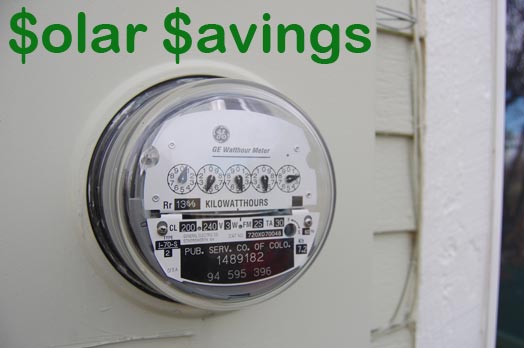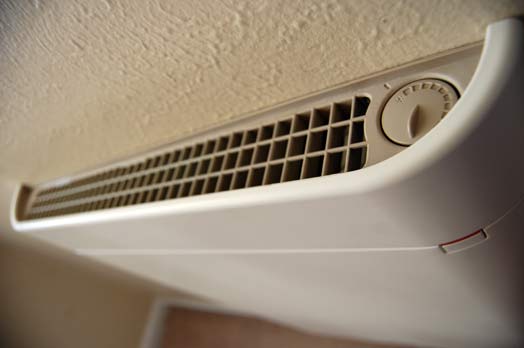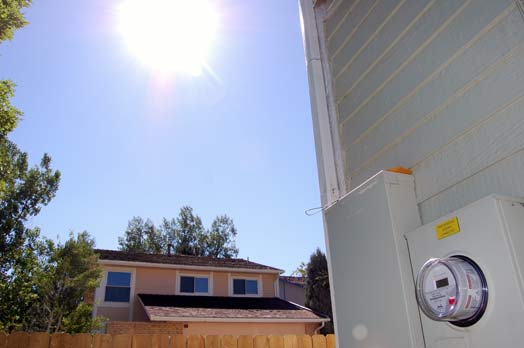
 I recently wrote that our utility Xcel Energy probably hates us due to the fact that our 5.59 kW home solar PV system has made us a net zero house. On top of this, we’re going to be using even less natural gas than before, probably no more than 10 therms on average per month.
I recently wrote that our utility Xcel Energy probably hates us due to the fact that our 5.59 kW home solar PV system has made us a net zero house. On top of this, we’re going to be using even less natural gas than before, probably no more than 10 therms on average per month.
This all means Xcel will only get about $12 per month from us – from now until pretty much eternity, or at least until we move out of our house (or Xcel raises its electric and gas rates).
Unfortunately, us using less natural gas is coming at a cost: My pride in what, up to now, has been our extremely low monthly electric usage, which typically ranges from about 200 to 450 kWh per month. This for a family of four in a house that’s about 2,100 square feet when our furnished basement is included in the total.
What do our electric and gas use have to do with each other?
 Heating with solar electricity
Heating with solar electricity
As I noted in a recent entry, we’re using six high efficiency resistance electric wall heaters from eheat.com to heat our home this year instead of our natural gas burning forced hot air furnace.
We’re doing so largely because we’re sitting on 10,000 kWh of extra solar-generated electricity we’ve banked with Xcel. If we don’t use this extra electricity, we will eventually lose it – though, according to Xcel’s current solar kWh banking for life terms this wouldn’t happen unless we move (or Xcel suddenly changes its rules– you never know…).
Moving from gas to electricity for home heating means we won’t be paying a dime to Xcel to heat our home this winter. It also means radically higher monthly kWh use for us.
Part of my “down” feeling comes from the fact that I know some folks will see 1,500 kWh of electricity we used in a month and unfairly judge us as energy hogs.
In the past, our typical winter daily kWh use has been about 12 to 15 kWh (our natural gas burning forced hot air furnace uses a 750 electric watt fan to blow warm air throughout the house). On “dryer” days – we use the dryer more often in the winter than in the spring, summer and fall, when we hang our clothes out 90 percent of the time – we sometimes push to as high as 30 kWh.
30-50 kWh per day
With the eheat.com wall heaters now providing our heat, we’re regularly hitting between 30 and 50 kWh per day. That’s a painfully high daily total for an energy use miser like me who prides himself on the fact that we once used fewer than 200 kWh of electricity in a month (in May 2011).
In fact, I feel pretty lame about using up to 60 kWh of electricity on a single day. It feels to me like we’re somehow “wasting” energy.
Of course, this view loses sight of the fact that: a) we’ve produced 10,000 kWh more worth of solar electricity than we’ve used in the past 2 ½ years; b) our previous lower monthly kWh relied on the burning of a good amount of natural gas to heat our home.
In fact, I estimate that we used about 320 therms of natural gas to heat our home last winter, or the equivalent of about 9,200 kWh of electricity.
 7,500 kWh to heat our home
7,500 kWh to heat our home
Even if we end up burning through 50 kWh of electricity per day on average for the next five months, by the end of the heating season here on Colorado’s Front Range, we’ll have used about 7,500 kWh. That’s considerably less than the 9,200 kWh worth of natural gas we burned last year (and that doesn’t even count the electricity the electric fan in our natural gas heater used).
So, I guess I should be feeling good about myself right now, even when I look at that 50 kWh daily total electric use – but somehow I haven’t quite gotten to that point.
Part of my “down” feeling comes from the fact that I know some folks will see 1,500 kWh of electricity we used in a month and unfairly judge us as energy hogs.
That’s because there seems to be tunnel vision by some with the focus on a home’s electricity use – to the exclusion of its natural gas use. So, the same person who’s boasting about using 200 kWh of electricity or less per month might be burning a significant number of natural gas therms.
Banked solar kWh
In any case, hopefully I’ll become more comfortable with our high electric use situation this winter and, by the end of the winter – when we’re likely to still have 7,000 kWh of extra solar-generated electricity banked with Xcel – I’ll actually feel good about it.
One thing will surely help me get there: The $25 per month utility bills we’ll be paying – with that money going to heat our hot water and to various utility taxes and fees.
{googleAds}<div style=”float:right; margin-left: 10px;”>
<script type=”text/javascript”><!–
google_ad_client = “pub-7703542917199961”;
/* 200×200,
created 12/8/09 */
google_ad_slot = “7950368454”;
google_ad_width
= 200;
google_ad_height = 200;
//–>
</script>
<script
type=”text/javascript”
src=”http://pagead2.googlesyndication.com/pagead/show_ads.js”>
</script>
</div>
{/googleAds}
Yes, that’s right, even in the heart of the Colorado winter months of December, January and February our total monthly utility bill – again this includes electric AND gas, don’t forget the gas, baby;-) – will be $25.
Beat that!
[Okay, to be fair, we paid $8,000 out of pocket for our 5.59 kW solar system and in 2 ½ years we’ve generated about 21,000 kWh of electricity, or, at Xcel rates, $2,300 worth of electricity. So we’re only about 30 percent to “payback”. Of course, if we’d been charging an EV and using solar electricity to replace gasoline costs, we’d be about 90 percent to payback right now. In the end, though, a $25 utility bill, and the sense of independence that comes from being a net zero house is extremely satisfying, actually, priceless, as they say ;-)]
Related articles–>


